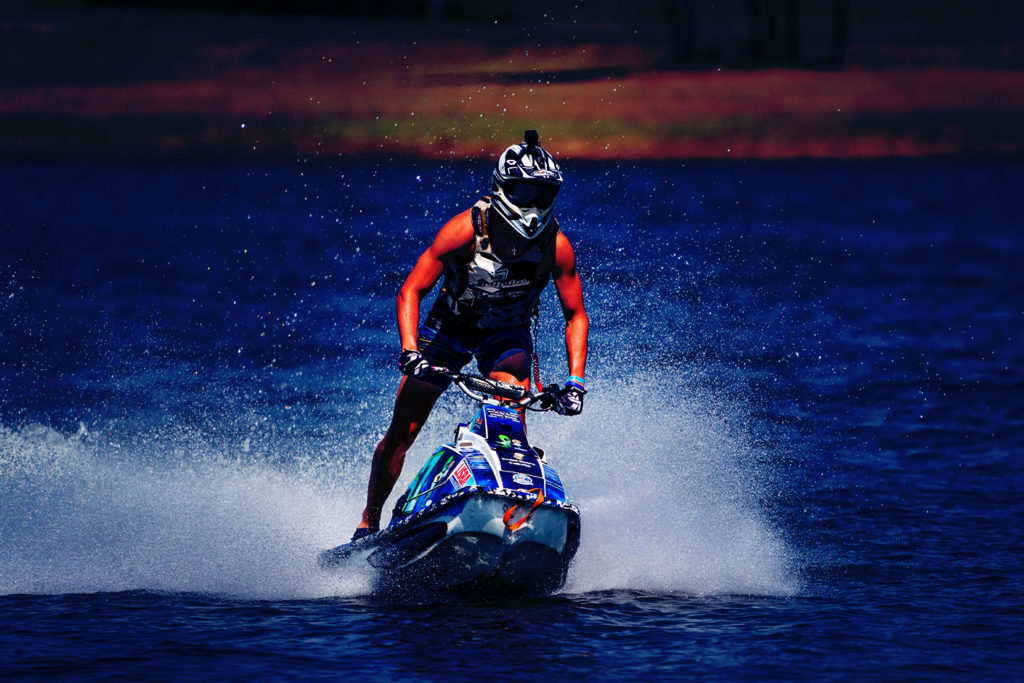Jet skis, also known as personal watercraft (PWC), originated from a combination of engineering innovation and recreational water sports development in the late 1960s and early 1970s. The concept and initial designs for what would become the modern jet ski are attributed to Clayton Jacobsen II, an American motocross racer and inventor.
Here’s a brief history of where jet skis originated…
- Early Development (1960s)
- Clayton Jacobsen II began experimenting with the idea of a personal watercraft that could provide the thrill of motorcycling on water. He envisioned a small, nimble watercraft powered by a jet propulsion system, similar to how jet engines operate.
- First Prototype (1972)
- Jacobsen’s initial prototype, known as the “Water Jet,” featured a stand-up design resembling a motorbike on water. It was powered by a modified outboard engine that expelled water through a nozzle for propulsion.
- Commercialization (1973)
- Kawasaki, a Japanese manufacturer known for motorcycles and heavy machinery, recognized the potential of Jacobsen’s invention and collaborated with him to refine and commercialize the concept.
- In 1973, Kawasaki introduced the world’s first commercially successful personal watercraft, the “Jet Ski”. It featured a stand-up design, a compact hull, and a handlebar for steering, and resembling a motorbike on water.
- Popularity and Evolution
- The Kawasaki Jet Ski quickly gained popularity among water sports enthusiasts for its agility, speed, and maneuverability. It sparked a new category of recreational watercraft and inspired other manufacturers to develop their own models.
- Over the years, jet skis evolved with advancements in hull design, engine technology, safety features, and seating options, catering to a wider range of users and purposes.
Today, jet skis are produced by several manufacturers worldwide, offering models for recreational use, racing, touring, and various water sports activities. The origin of jet skis highlights the convergence of engineering innovation and recreational water sports, transforming how people enjoy waterways around the globe.



